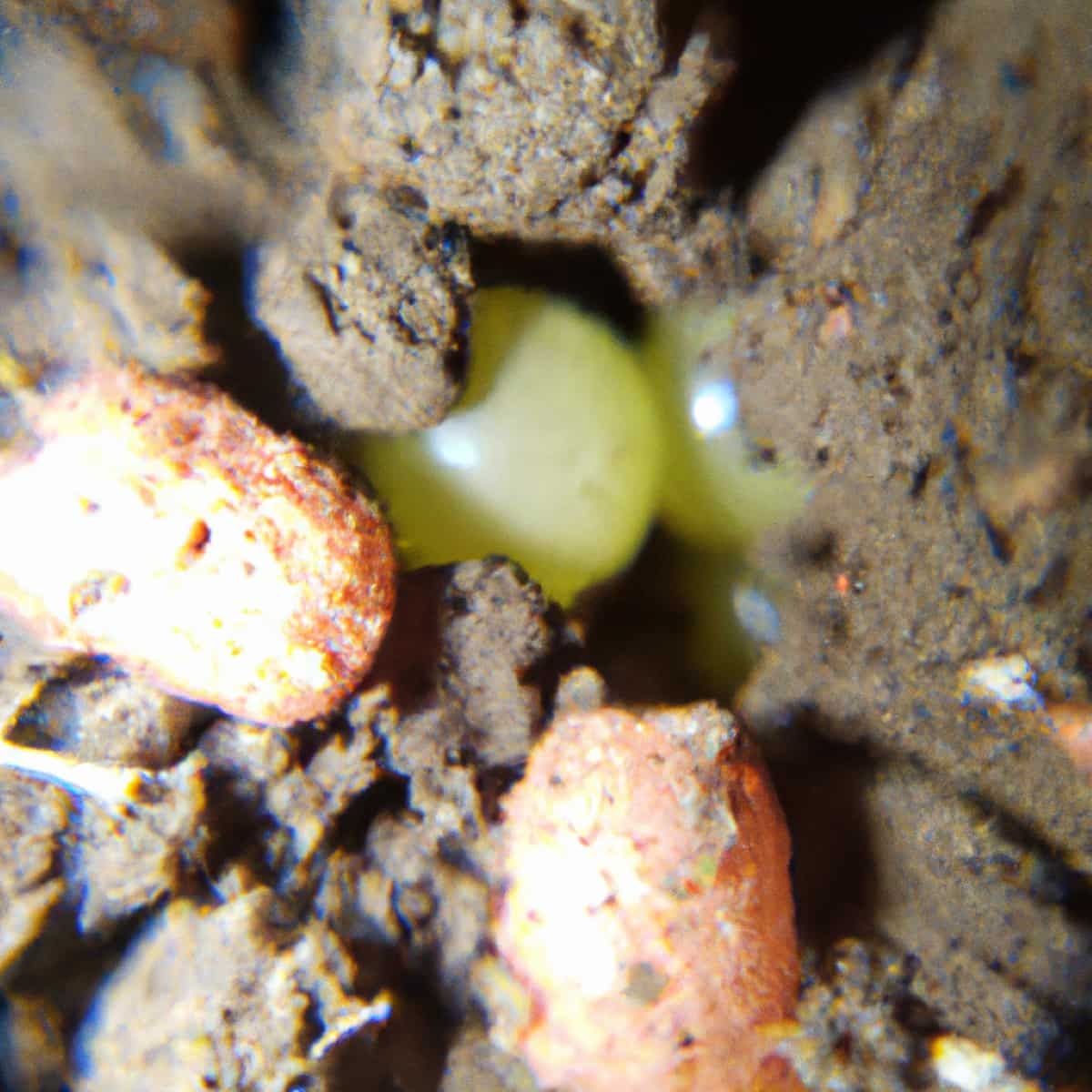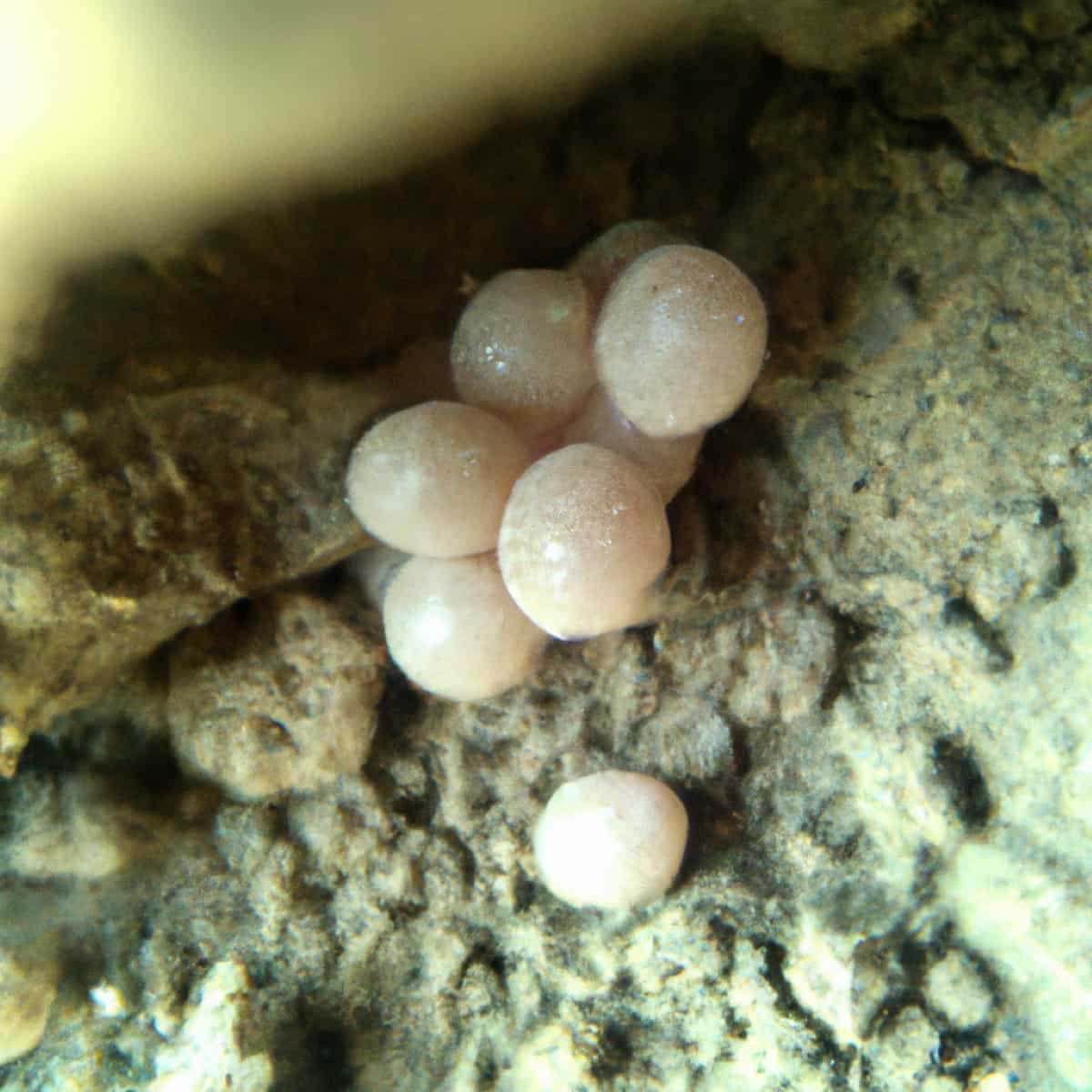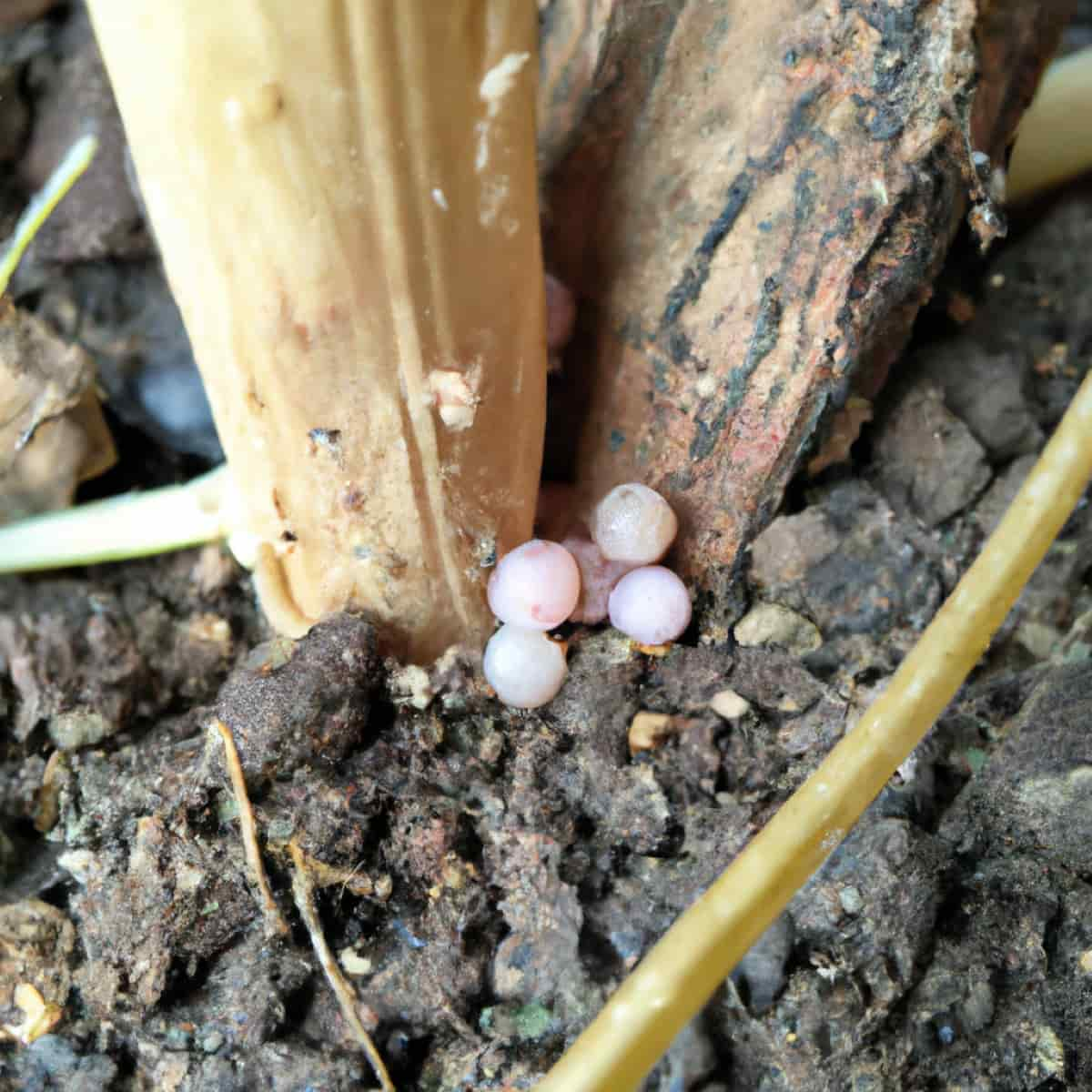Welcome to our informative guide on identifying and controlling spider eggs in plant soil! As garden enthusiasts, we understand healthy soil’s vital role in nurturing our beloved green friends. However, hidden within the depths of that soil can be a tiny, yet potentially destructive, intruder: spider eggs.

In this blog, we’ll unveil the secrets of spider egg identification and provide simple DIY steps to regain control. Get ready to a journey where we’ll explore the characteristics of spider eggs, learn how to spot them and empower you with effective strategies to control them.
How to Identify and Control Spider Eggs in Plant Soil
What are Spider Eggs in Plant Soil?
Spider eggs are common in plant soil, but they are unwelcome guests. These small, hard-shelled objects can often be discovered near the plant roots. Unlike eggs of other creatures typically laid on softer surfaces, spider eggs are buried within the soil, awaiting their transformation into tiny spiderlings.
Spider eggs can be found worldwide, and they appear in various plant species. Their elusive nature makes them challenging to detect as they are often nestled inside plant stems or leaves, camouflaging their presence. In addition to being a nuisance, spider eggs can harm plants by introducing pests and diseases, contributing to root rot, or disrupting the soil’s chemistry.
Identifying Spider Mite Eggs in Soil
Identifying spider mite eggs in the soil can be tricky. These eggs are usually small, round, and translucent, allowing light to pass through them. They are barely visible without magnification, measuring only about 0.1 millimeters in diameter. Spider mite eggs are often found in clusters or individually, tucked away on the undersides of leaves or in the soil near the plant roots.
With a slightly wrinkled surface, they possess a textured appearance. If you come across small, white, round eggs in your soil, they may belong to insects or worms. Various insects, such as grubs, beetles, and caterpillars, lay their eggs in the soil, while some worm species, like earthworms, create cocoons. With a closer inspection, it’s easier to determine the exact type of egg.
Spider Eggs Life Cycle
- Stage 1: Egg Spider mite eggs are laid by adult females within the soil. These eggs take around three weeks to hatch; a single adult can lay up to 100 eggs. Fertilized eggs result in female mites, while unfertilized ones produce males. Typically, the male-to-female ratio is approximately 3 to 1.
- Stage 2: Larvae Upon hatching, the colorless larvae emerge and immediately begin feeding on plant sap and cells. Over time, they develop their distinctive coloration and two black spots.
- Stage 3: Protonymph The inactive, 6-legged larvae transform into an 8-legged stage called protonymph. At this point, the presence of webbing becomes visible.
- Stage 4: Deutonymph The protonymph grows rapidly and enters a resting phase after obtaining sufficient nourishment. Through next molting, it transforms into a deutonymph. Webbing continues to be produced during this stage.
- Stage 5: Adult The deutonymph feeds, undergoes molting, and ultimately reaches adulthood. Adult spider mites can restart the reproductive cycle, perpetuating the population.
Symptoms of Spider Eggs in the Plant Soil
- Presence of spiders: If you observe spiders crawling around the soil or on the plant, they may have laid eggs in the soil.
- Webbing: Spider egg sacs are often surrounded by webbing. If you notice a significant amount of spider webs around the plant or in the soil, it could be a sign of spider eggs.
- Strange growth: Spider eggs can affect plant growth. Observing unusual growth patterns, such as stunted growth or twisted stems, might indicate spider eggs.
- Pests: Spiders feed on insects, so if you notice an abundance of pests around your plant, it could suggest the presence of spiders and potential spider egg-laying in the soil.
Effects of Spider Eggs on the Plant Soil
Spider eggs in plant soil are generally not harmful to plants and can even be beneficial, as spiders are natural predators of many plant-damaging insects.
- Competition for resources: When spider eggs hatch, the spiderlings may compete with the plant for nutrients and water in the soil. If there is an excessive number of spiderlings, they can deplete the soil’s resources, which can harm the plant.
- Overpopulation of spiders: If the spider population in the soil becomes too large, they may start preying on beneficial insects and other organisms that contribute to soil health. This imbalance can negatively impact plant growth.
- Unsightly appearance: Some individuals may find spider eggs and spiderlings in plant soil visually unappealing, diminishing the aesthetic appeal of the plants and surrounding area.
- Spider bites: While it is unlikely for spiders in the soil to bite humans, there is a potential risk. If someone gets bitten by a spider in the soil, they may experience pain, swelling, and other symptoms.
In case you missed it: How to Grow and Care for Orchid Plants Indoors: A Step-By-Step Comprehensive Guide

How to Get Rid of Spider Eggs
- Identify the spider eggs: Start by identifying the small, white, round eggs in the plant soil. Confirm that they are indeed spider eggs through research or consulting with an expert.
- Remove the eggs: Use a spoon or small trowel to remove the spider eggs from the soil. Ensure proper disposal, as the eggs can still hatch and become spiders if left in the soil or thrown in the garbage.
- Neem oil repels insects and fungus. Apply it to plant soil after dilution. This kills spiders and prevents spider eggs from hatching.
- Use sticky traps: Place sticky traps near your plants to attract and capture spiders and other insects that may be present in the soil.
- Keep your plants healthy: Maintaining plant health is crucial in preventing spider infestations. Provide adequate water, sunlight, and nutrients to keep your plants strong and resilient.
DIY Steps to Identify Spider Eggs
- Look for small, white, round eggs: Spider eggs are typically small, white, and round. They may resemble tiny balls or capsules in the soil or plant surfaces.
- Check for silk-like webbing: Spider eggs are often surrounded by silk-like webbing. Look for fine, thread-like structures around the eggs or connecting them to nearby surfaces.
- Observe the location: Spider eggs are commonly found near plant roots, stems, or leaves. Pay close attention to these areas when inspecting for eggs.
- Consider the size and quantity: Spider eggs are usually tiny, about the size of a pinhead. They may be laid in clusters, and a spider can lay hundreds of eggs simultaneously.
Controlling and Preventing Spider Eggs in Plant Soil
- Let the soil dry out: Spiders are attracted to moist environments, so allowing the soil to dry out between waterings can discourage them. This reduces their ability to lay and sustain eggs in the soil.
- Prune plants and remove debris: Removing low-growing branches and leaf debris improves air circulation and helps the soil dry out faster, making it less appealing for spiders to lay their eggs.
- Repot plants in spider-infested soil: If the infestation is severe, repotting the plants with fresh soil can eliminate the eggs and prevent further spread.
- Hose down the plants: Physically removing spiders and their eggs can be achieved by spraying them with water. This can effectively repel the insects and disrupt their life cycle.
- Vacuum the plants: Gently remove spiders and their eggs from the plant’s foliage using a vacuum cleaner with a brush attachment. This method helps control the spider population and keeps the plants free from insects.
- Release predatory insects: Introducing natural predators like ladybugs, lacewings, predatory mites, and nematodes can help eliminate spider eggs in the soil. These beneficial insects feed on the eggs and help maintain a pest-free environment.
- Sprinkle granular insecticides: Applying granular crystallized insecticides containing imidacloprid around the plants can eliminate spider eggs. This systemic pesticide is absorbed by the plants and ingested by insects, effectively paralyzing and killing them.
- Use neem oil or insecticidal soap: Spraying plants with neem oil or insecticidal soap disrupts the hormone systems of spiders and other insects, preventing their reproduction and reducing their populations. These natural alternatives are safe and effective in controlling spider eggs.
- Try hydrogen peroxide: Occasionally, hydrogen peroxide dilution can break up spider eggs and temporarily alter the soil’s pH, making it less suitable for egg survival. However, regular use should be avoided to prevent soil damage.
In case you missed it: Common Carrot Damaging Diseases: Identification, Treatment, Management, and Control

Conclusion
Identifying and controlling spider eggs in plant soil can be achieved through simple DIY steps. You can effectively manage spider eggs and maintain a healthy plant environment by implementing measures such as drying out the soil, pruning plants, repotting, using water, natural predators, and targeted insecticides.
- Feed Your Flock for Less: Top 10 Tips to Save on Chicken Feed
- Ultimate Guide to Ossabaw Island Hog: Breeding, Raising, Diet, and Care
- Hatching Answers: The Top 10 Reasons Your Chickens Aren’t Laying Eggs
- Eggs and Economics: Breaking Down the Cost of Raising Backyard Chickens
- Defend Your Greens: Proven Methods to Keep Iguanas Out of Your Garden
- Ultimate Guide to Cinnamon Queen Chicken: A Comprehensive Guide for Beginners
- Ultimate Guide to California Tan Chicken: Breeding, Raising, Diet, Egg-Production and Care
- Ultimate Guide to Marsh Daisy Chicken: Breeding, Raising, Diet, and Care
- 10 Types of Chicken Farming Businesses You Can Start for Profits